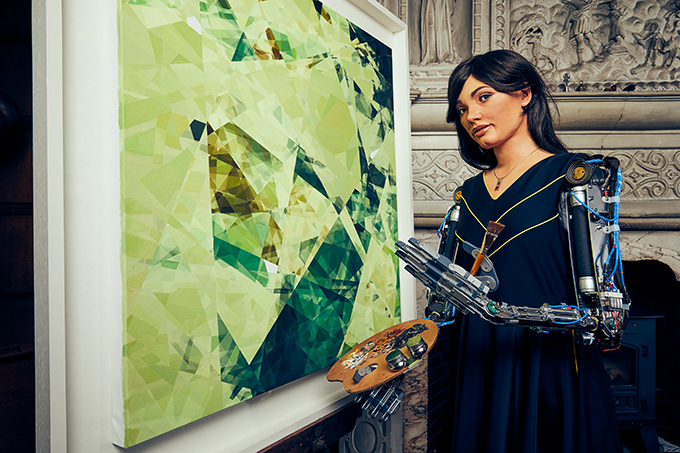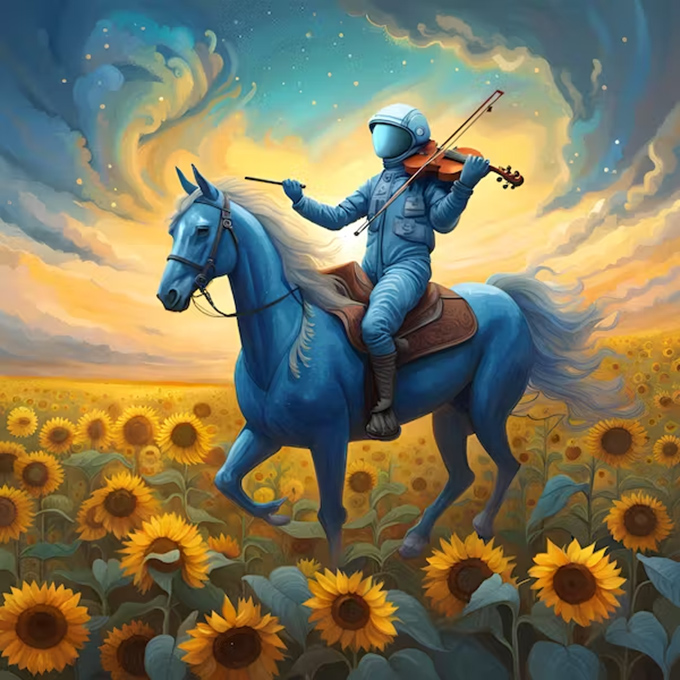 Generative artificial intelligence (AI) has been in the news, most recently concerning the Hollywood actors’ strike about the potential impact of AI in filmmaking. Another story involved AI being used to replicate the voice of the Canadian rapper Drake in a track that went viral.
These stories raise questions about performers’ rights, and also lead people to wonder: will AI replace artists?
These questions are also germane given recent advances in generative artificial intelligence trained on a vast amount of existing images that have been used to create new images based only on user-provided prompts.
I am a composer who has used creative AI in my music and sound practice for almost two decades. My creative practice and research has focused upon the potential for a collaborative relationship between artists and AI. From my perspective, while we are in a time of disruption where many artists will need to renegotiate terms of their labour in a new technological context, there are also opportunities for different forms of collaboration.
Generative artificial intelligence (AI) has been in the news, most recently concerning the Hollywood actors’ strike about the potential impact of AI in filmmaking. Another story involved AI being used to replicate the voice of the Canadian rapper Drake in a track that went viral.
These stories raise questions about performers’ rights, and also lead people to wonder: will AI replace artists?
These questions are also germane given recent advances in generative artificial intelligence trained on a vast amount of existing images that have been used to create new images based only on user-provided prompts.
I am a composer who has used creative AI in my music and sound practice for almost two decades. My creative practice and research has focused upon the potential for a collaborative relationship between artists and AI. From my perspective, while we are in a time of disruption where many artists will need to renegotiate terms of their labour in a new technological context, there are also opportunities for different forms of collaboration.
AI-generated images
AI-generated high-quality images range from concept art for video games to photorealistic works. Examples of generative AI visual art include fantastical images:
Image created by the author using dreamstudio.ai using the prompt: ‘Astronaut playing a violin while riding a blue horse in a field of sunflowers fantasy art.’ Notice the floating violin bow and incorrect right hand position.

Image created by the author in dreamstudio.ai using the prompt: ‘Young person holding a bullhorn and a red flower in the style of Banksy.’
Will AI replace artists?
On one hand, the answer to whether AI will replace artists is no. Generative AI is a powerful tool that can expand the possibilities of art making and will still require the guiding hand of a human artist. As with any new technology, some creative processes will become both easier and less time-consuming with AI. For example, an artist interested in generating visual imagery can suggest a prompt and the AI produces it immediately. Instead of taking hours or days to experiment with an idea, it may take minutes or even seconds. The current image-producing systems still require human interaction through both a text prompt and the curation of its output, itself an artistic act. On the other hand, these limitations will soon be overcome: human-provided prompts can easily be replaced by generated prompts (which some systems already allow for). Research into creative AI has already produced systems that can evaluate their own output through aesthetic judgements (rather than only mimicing its data set). As such, there is the very real potential that an endless supply of fully AI-produced artwork will constitute much of the imagery we see online and flood the market.Reasons to hope
For many practising artists there are reasons to hope. Creative AI can allow some artists greater time and energy to explore artistic avenues, thereby producing not just more art, but potentially more paradigm-shifting art. Artist and scholar Philip Galanter, who explores art theory bridging the gap between the cultures of science and the humanities, has defined “generative art” as “any art practice where the artist uses a system, such as a set of natural language rules, a computer program, a machine, or other procedural invention, which is set into motion with some degree of autonomy contributing to or resulting in a completed work of art.” Generative art-making practices have been around for decades (arguably much longer). Human interaction with these systems can produce truly stunning work.Current systems can only produce mashups of existing data. While the output may be novel in that a given output may never have existed previously, its esthetic value may be limited.Sold! Mario Klingemann’s pioneering Artificial Intelligence artwork sells to an online bidder for £40,000 in the artist’s auction debut 🤖 #SothebysContemporary @quasimondo pic.twitter.com/kU49aqaKS8
— Sotheby’s (@Sothebys) March 6, 2019